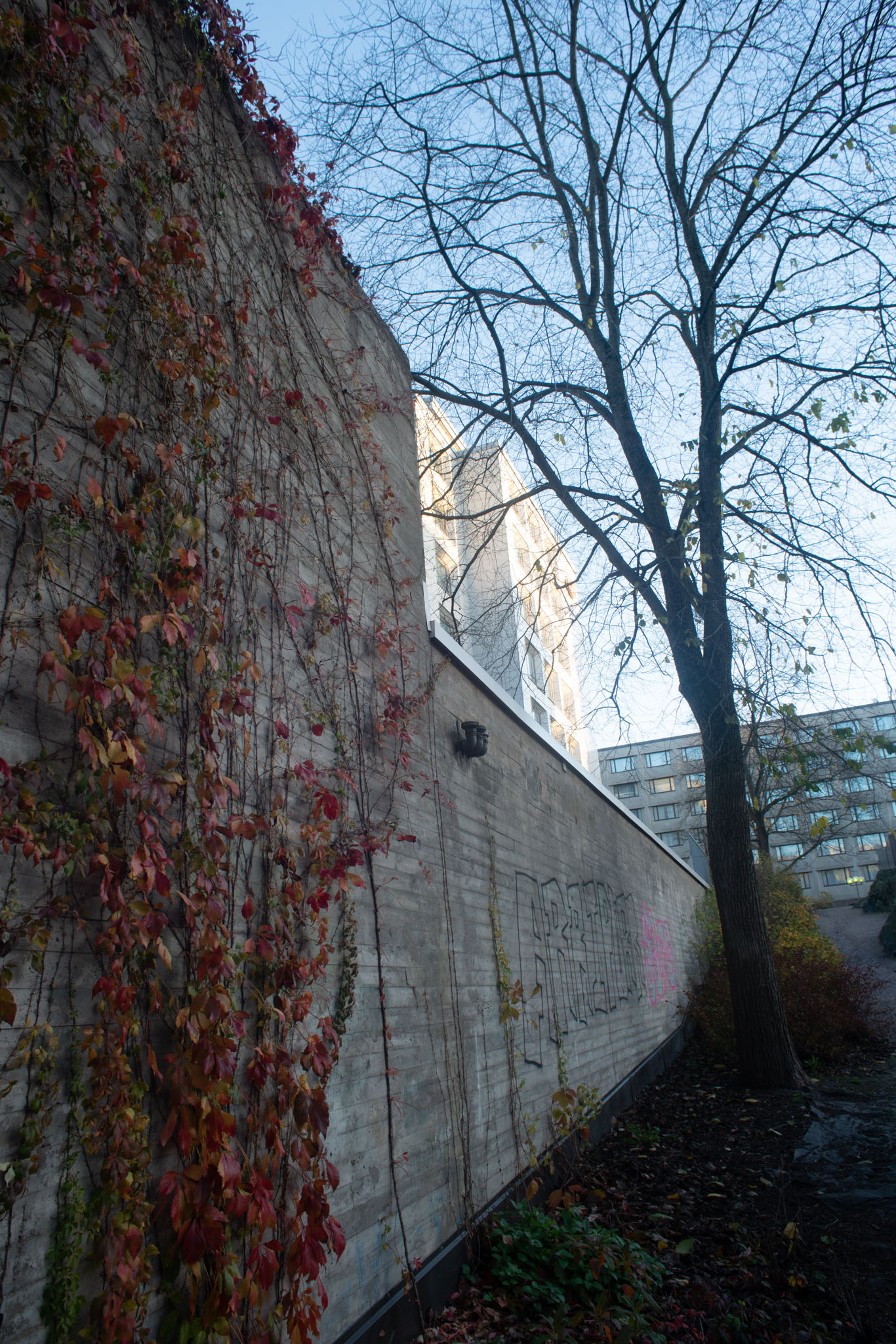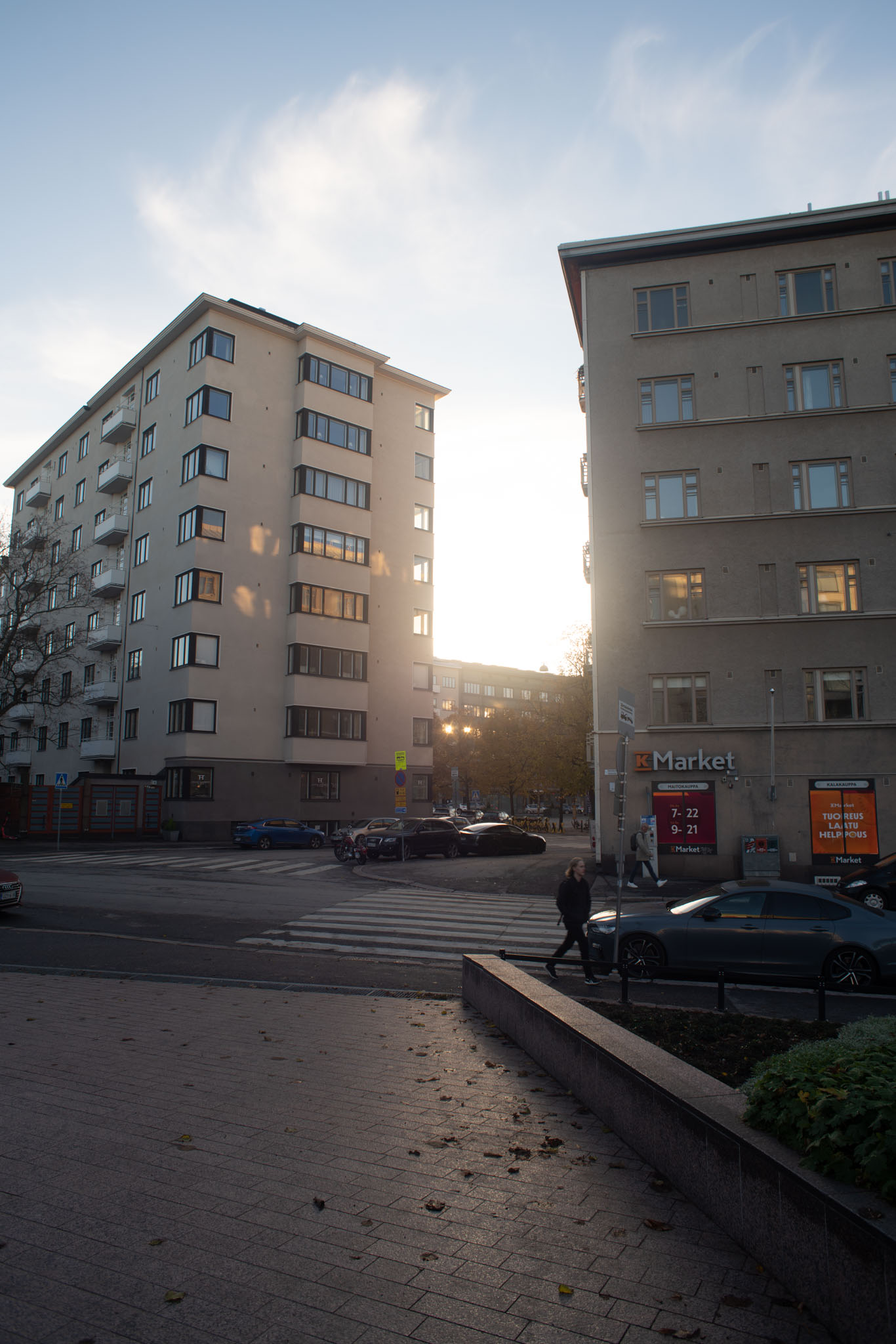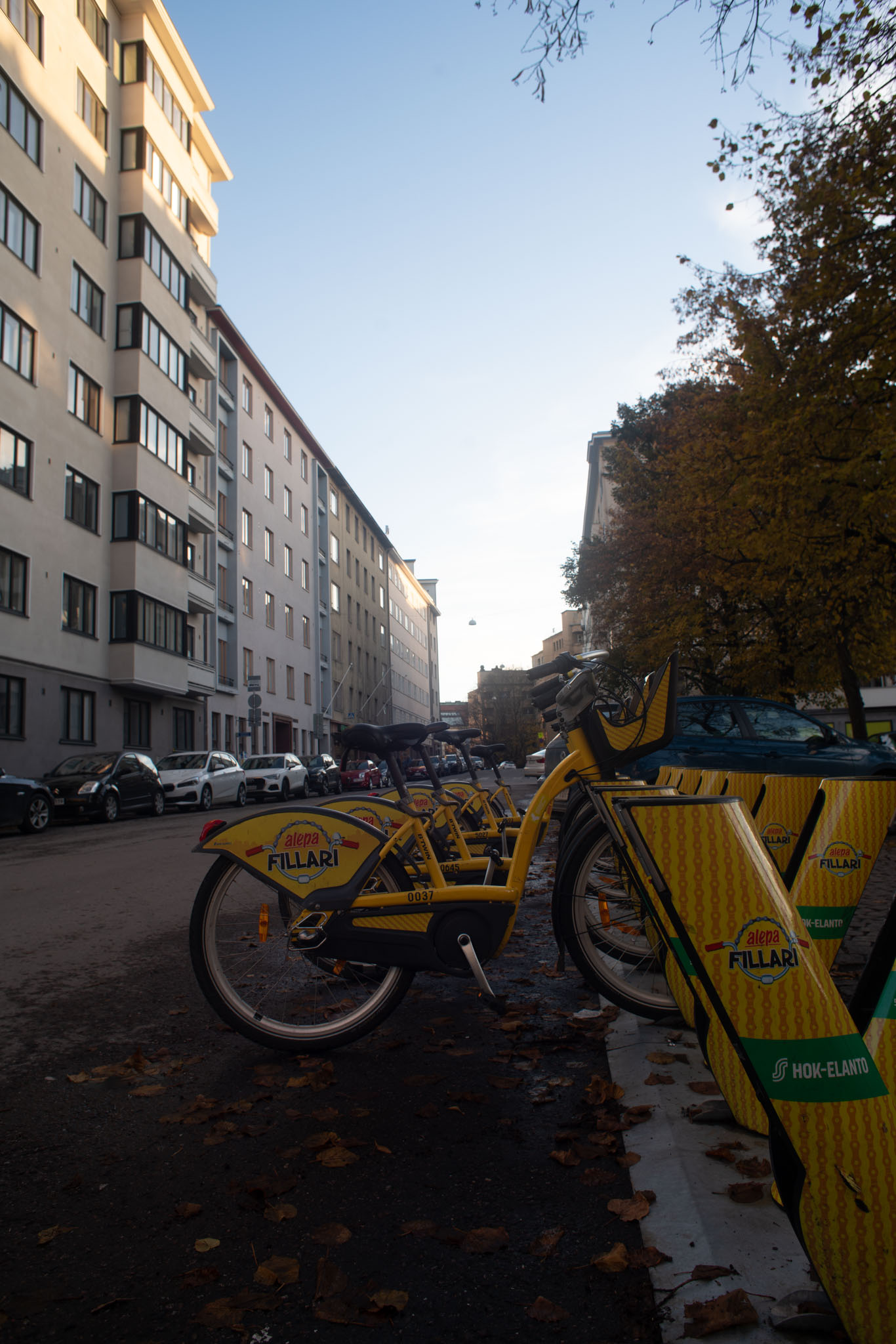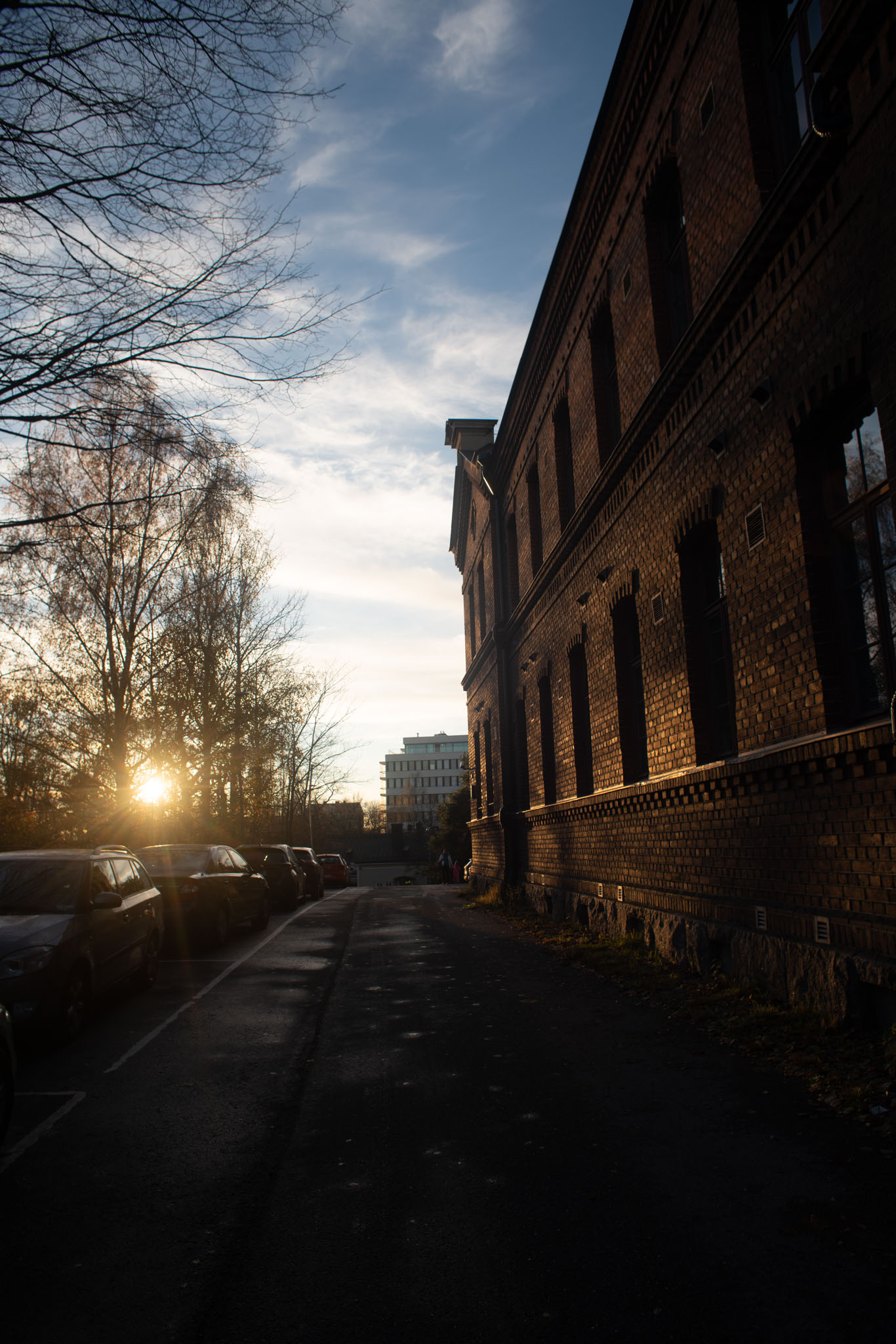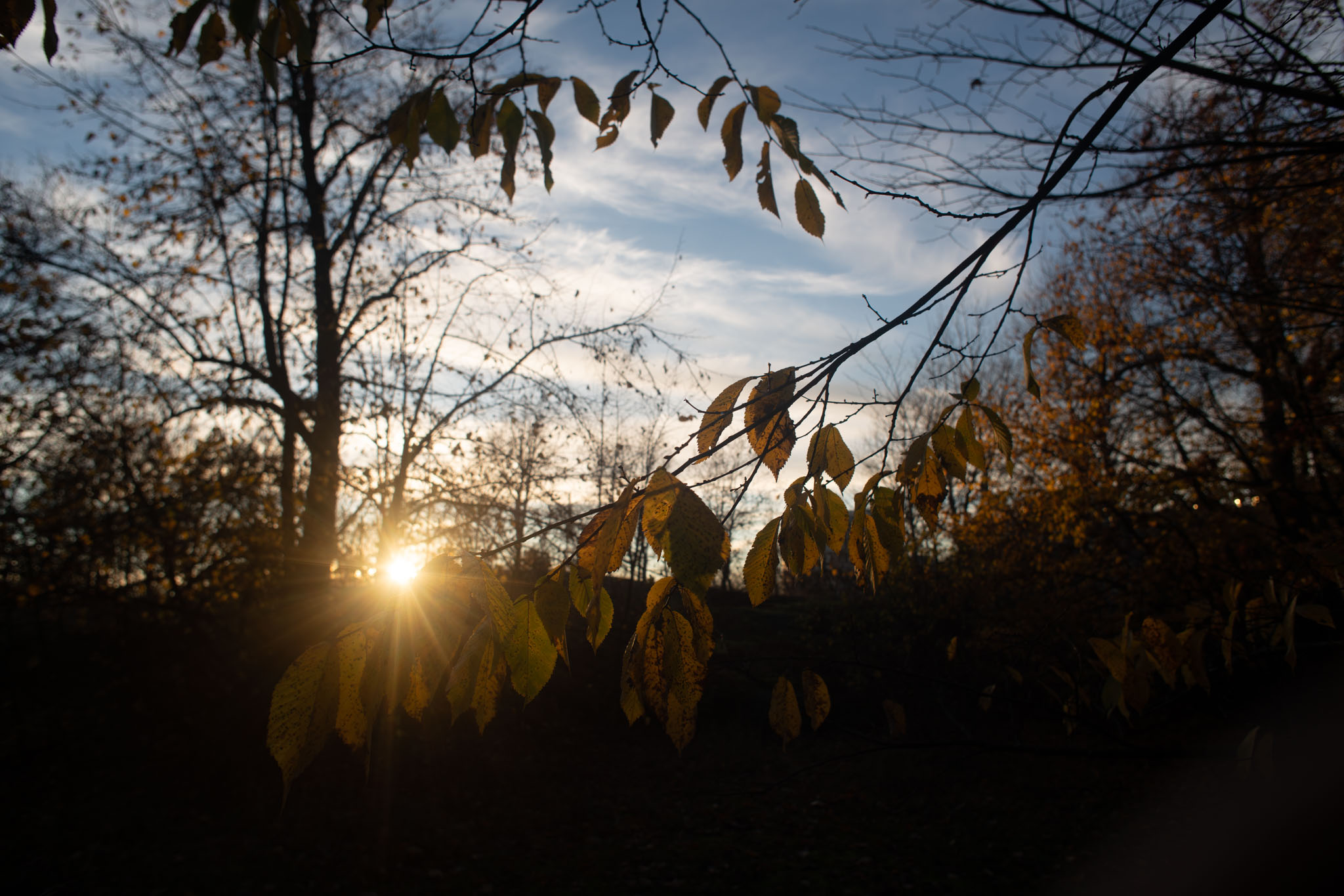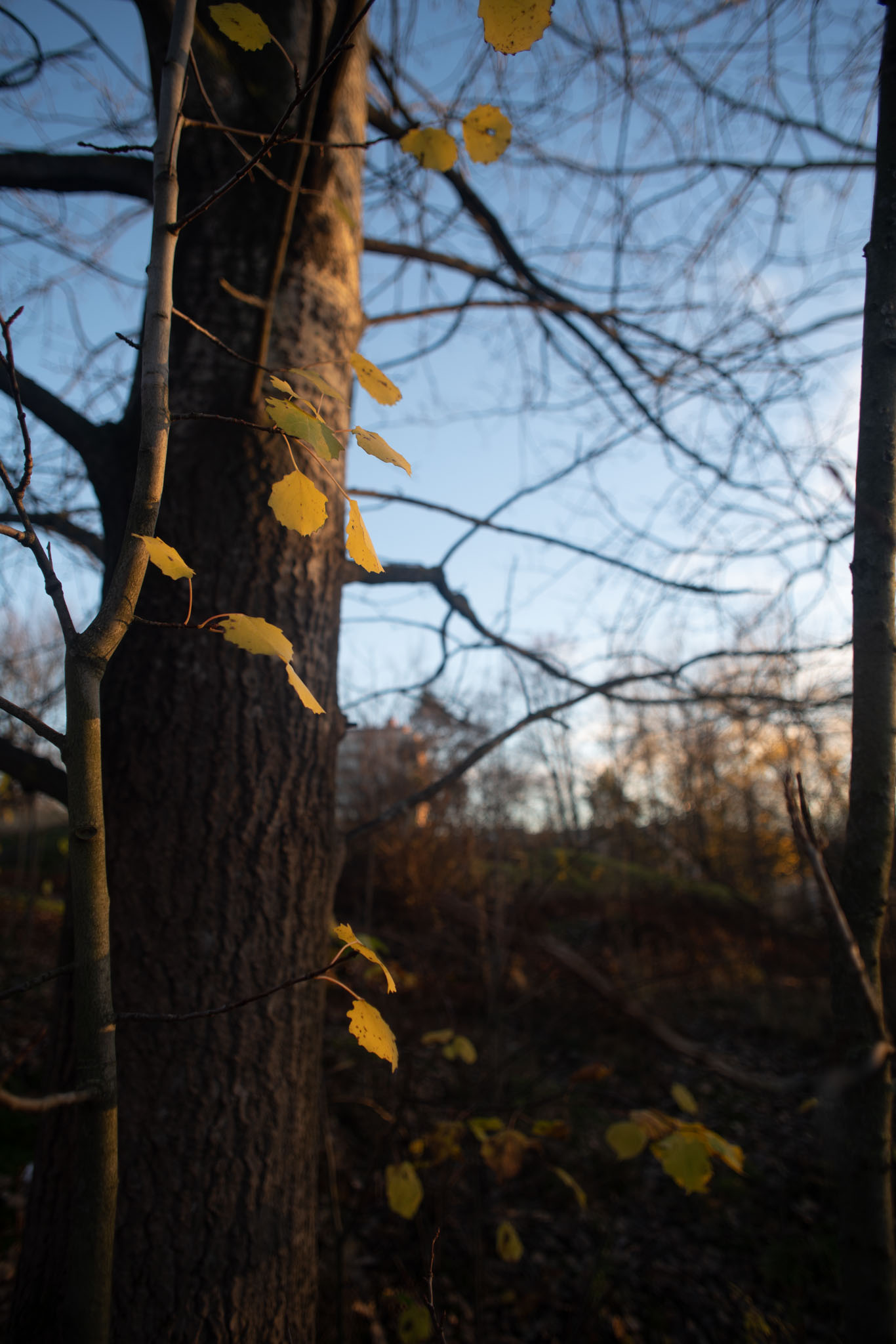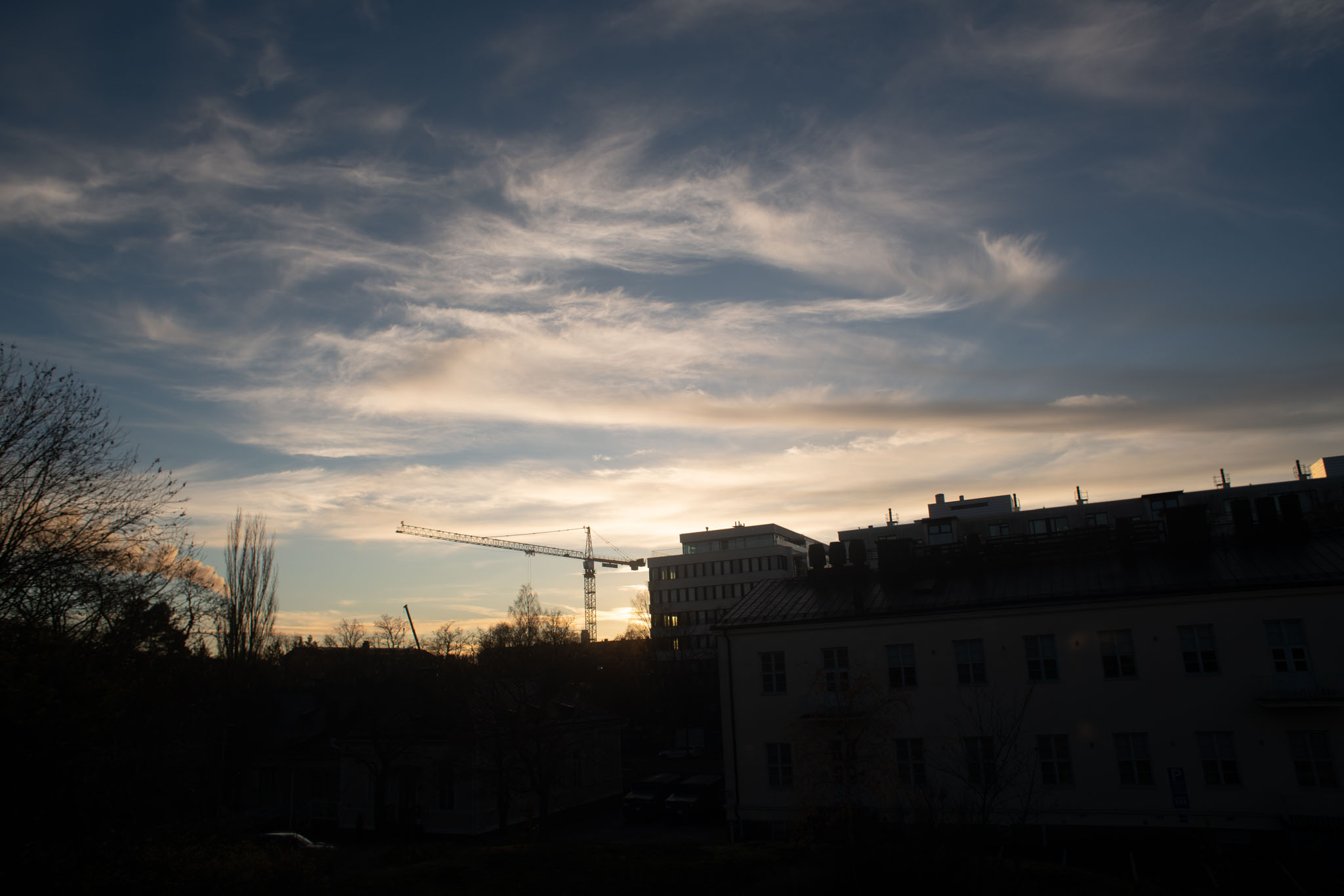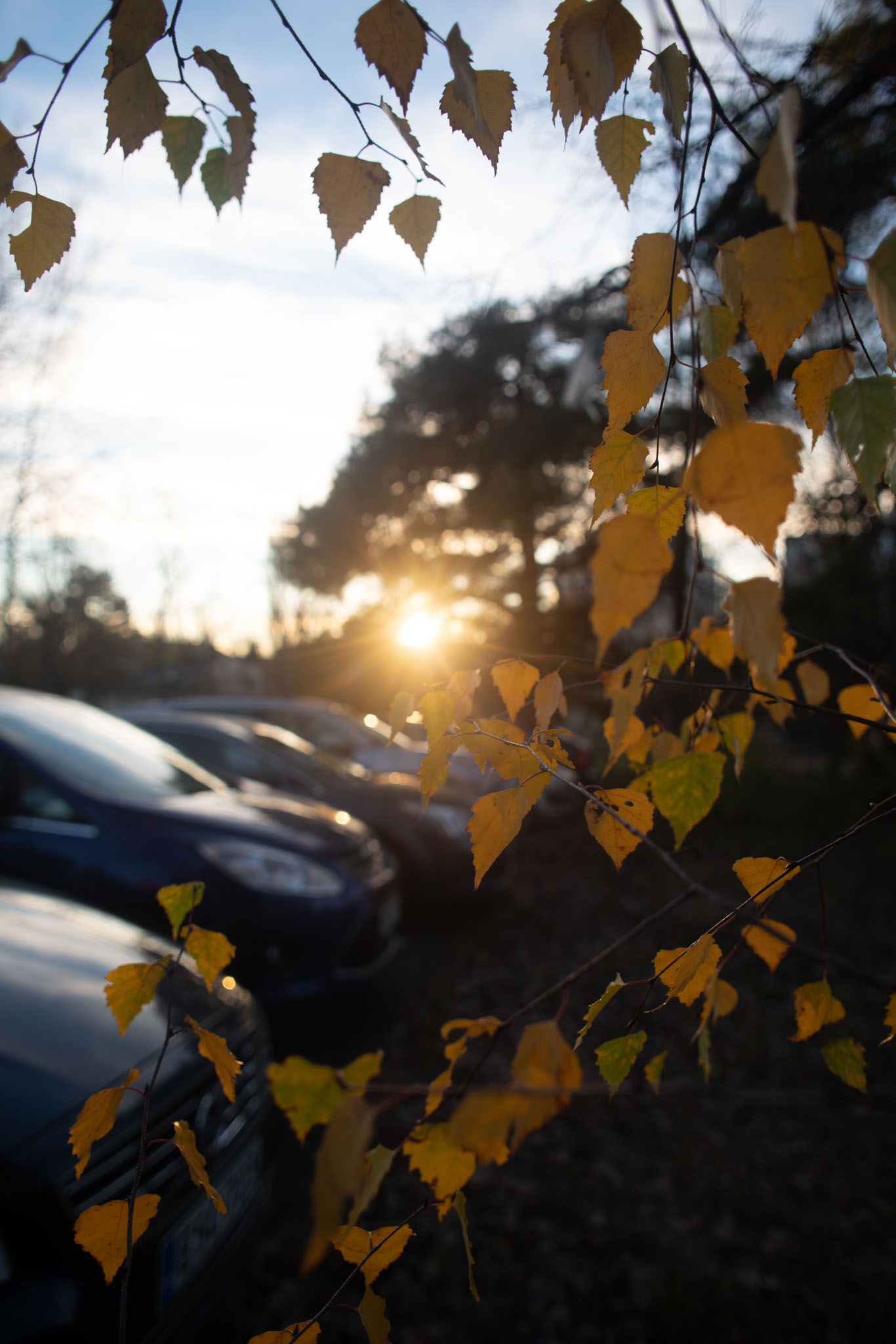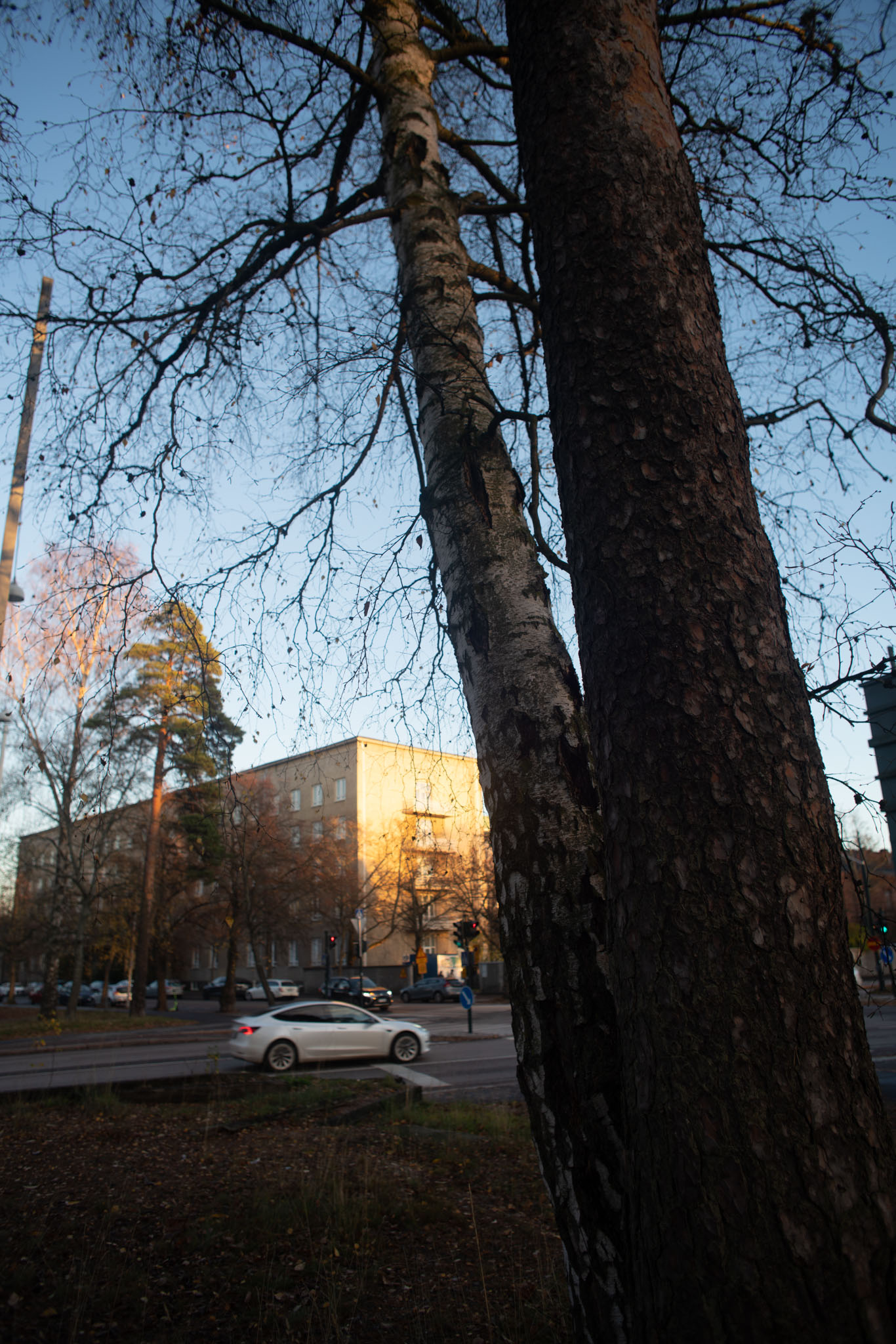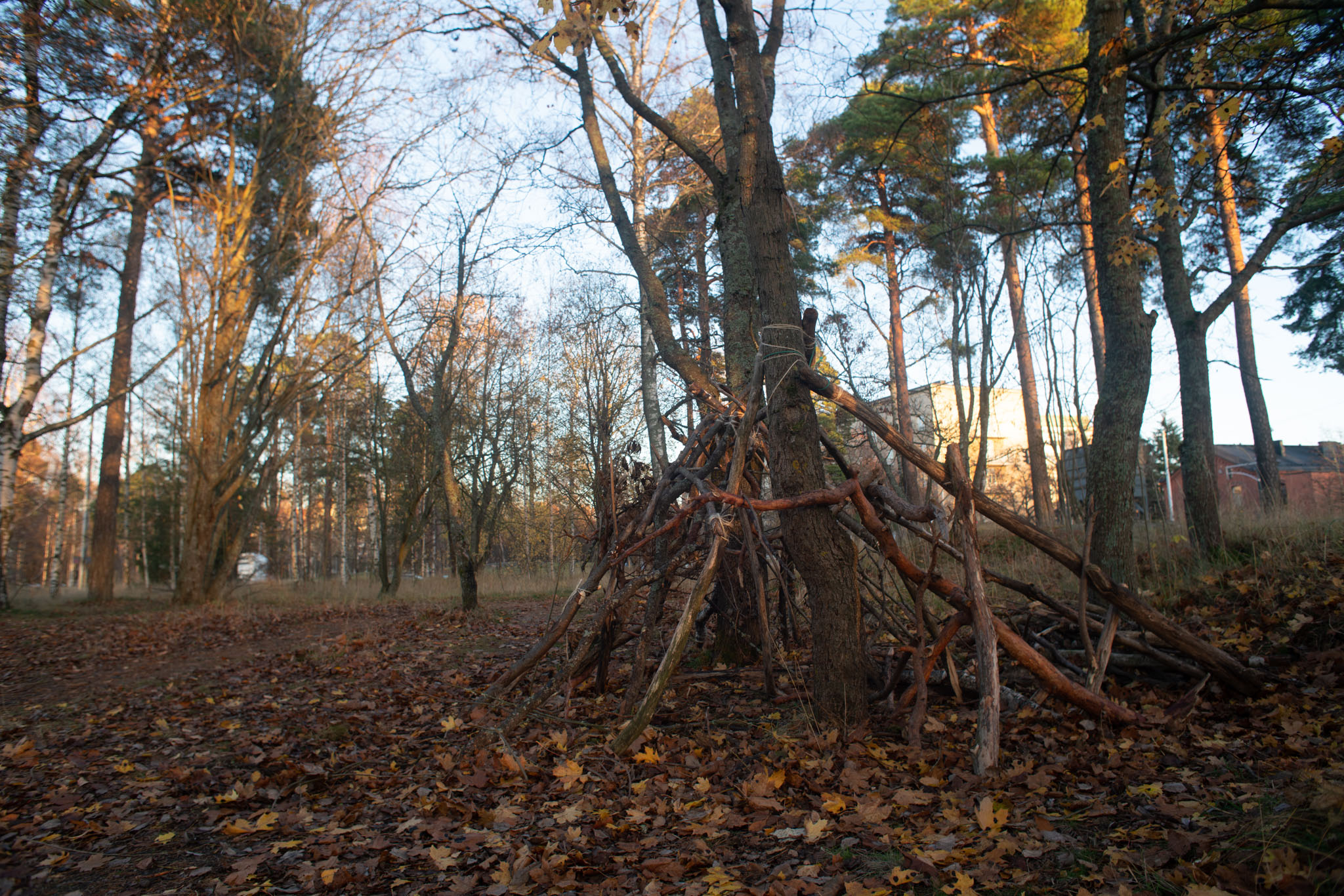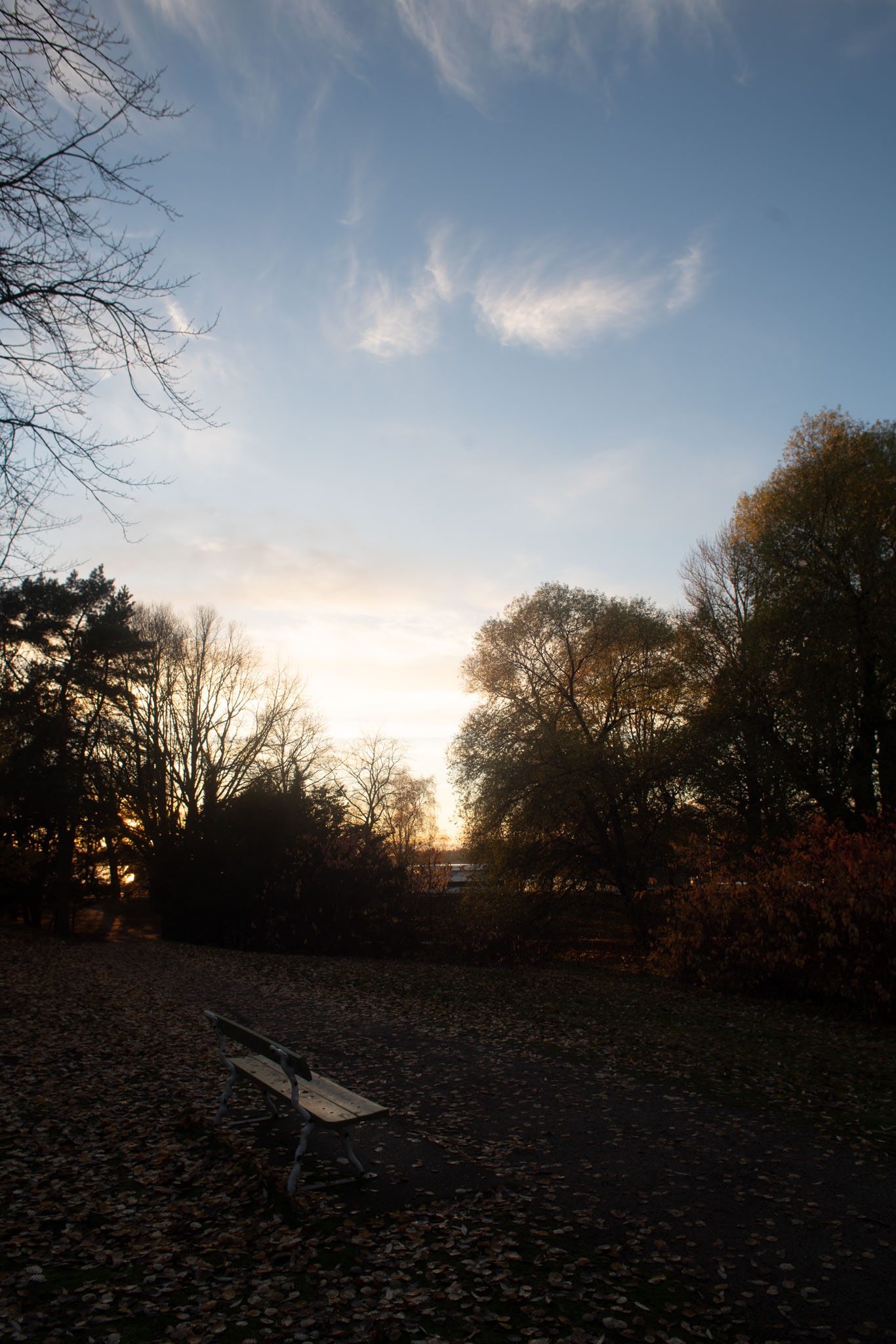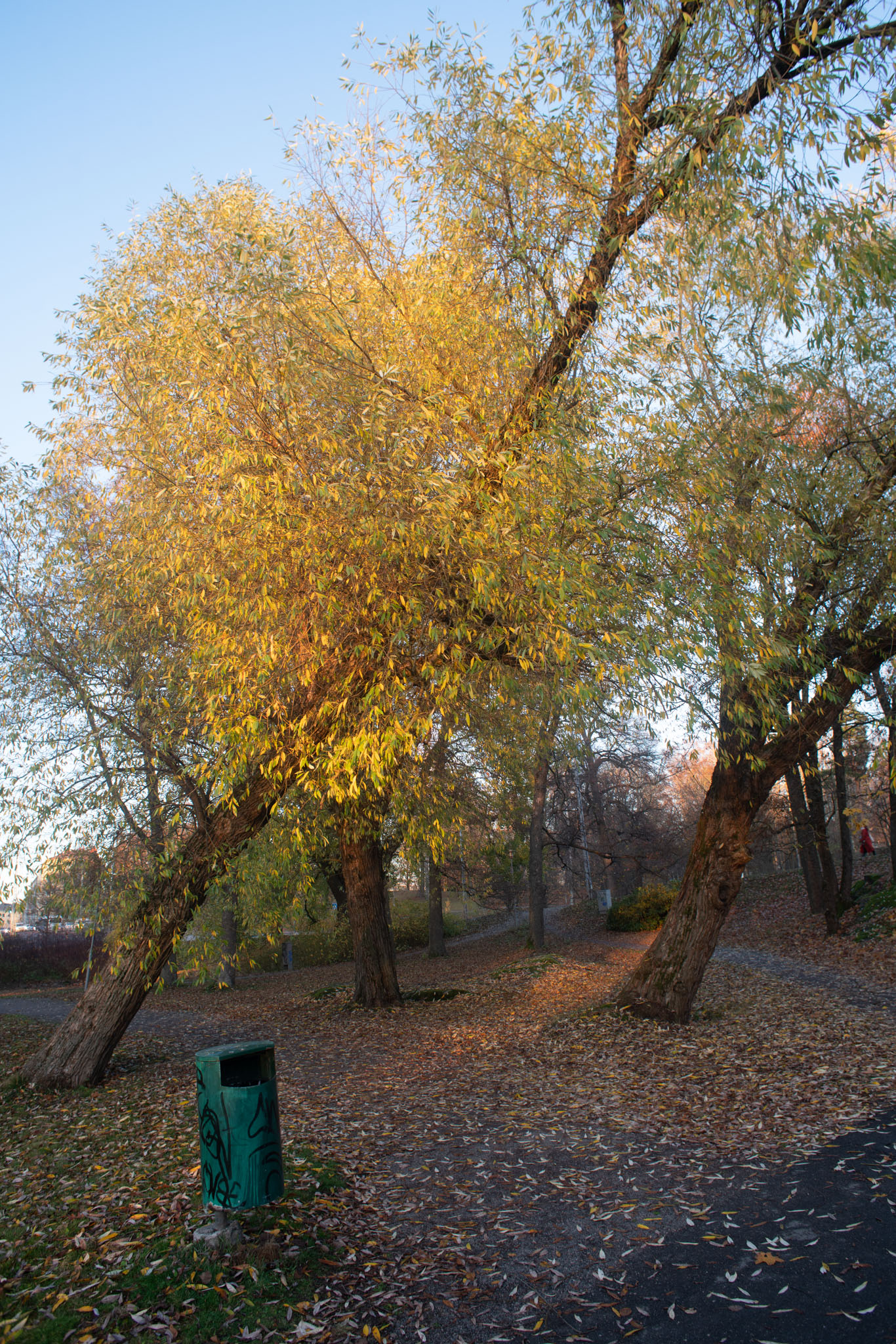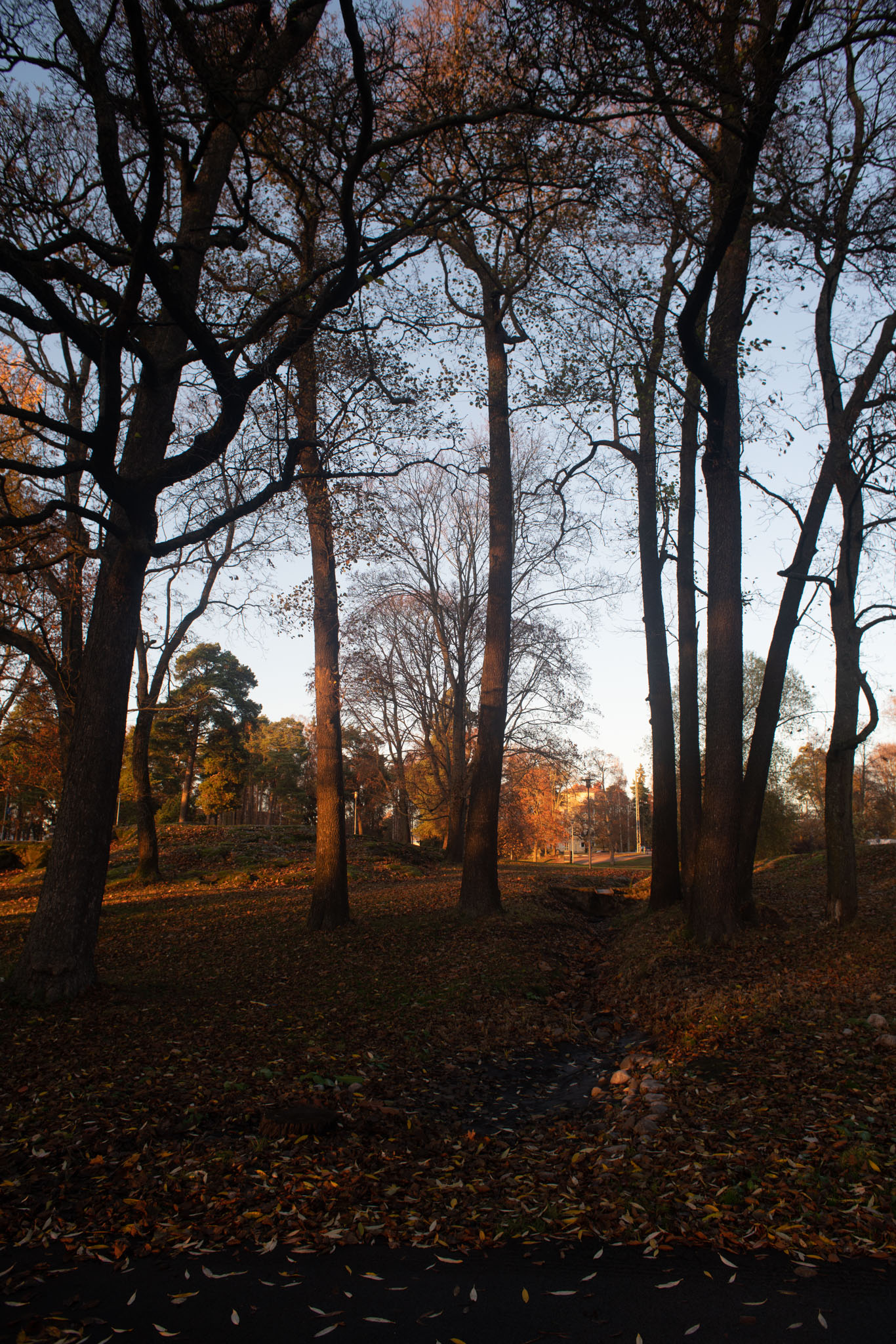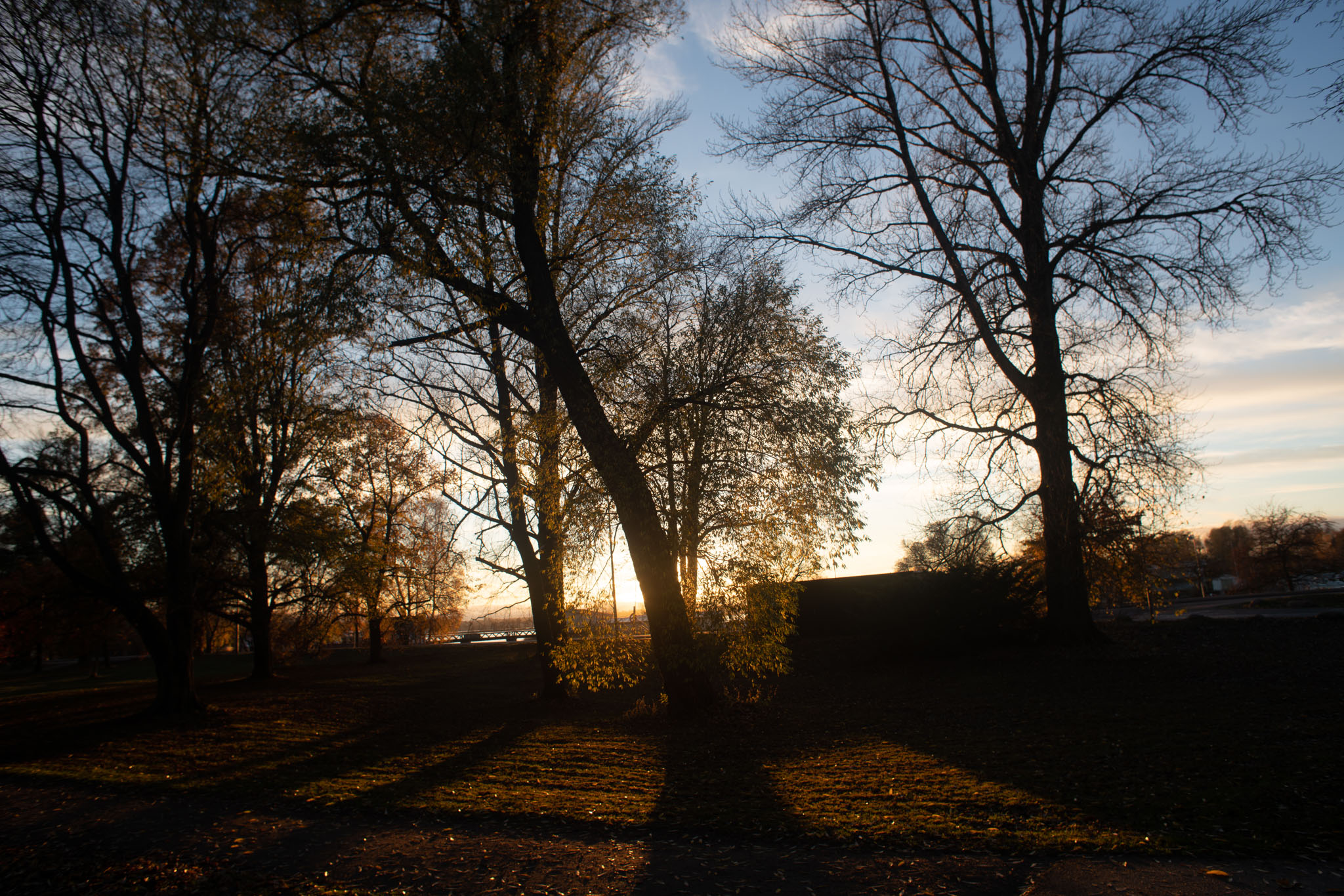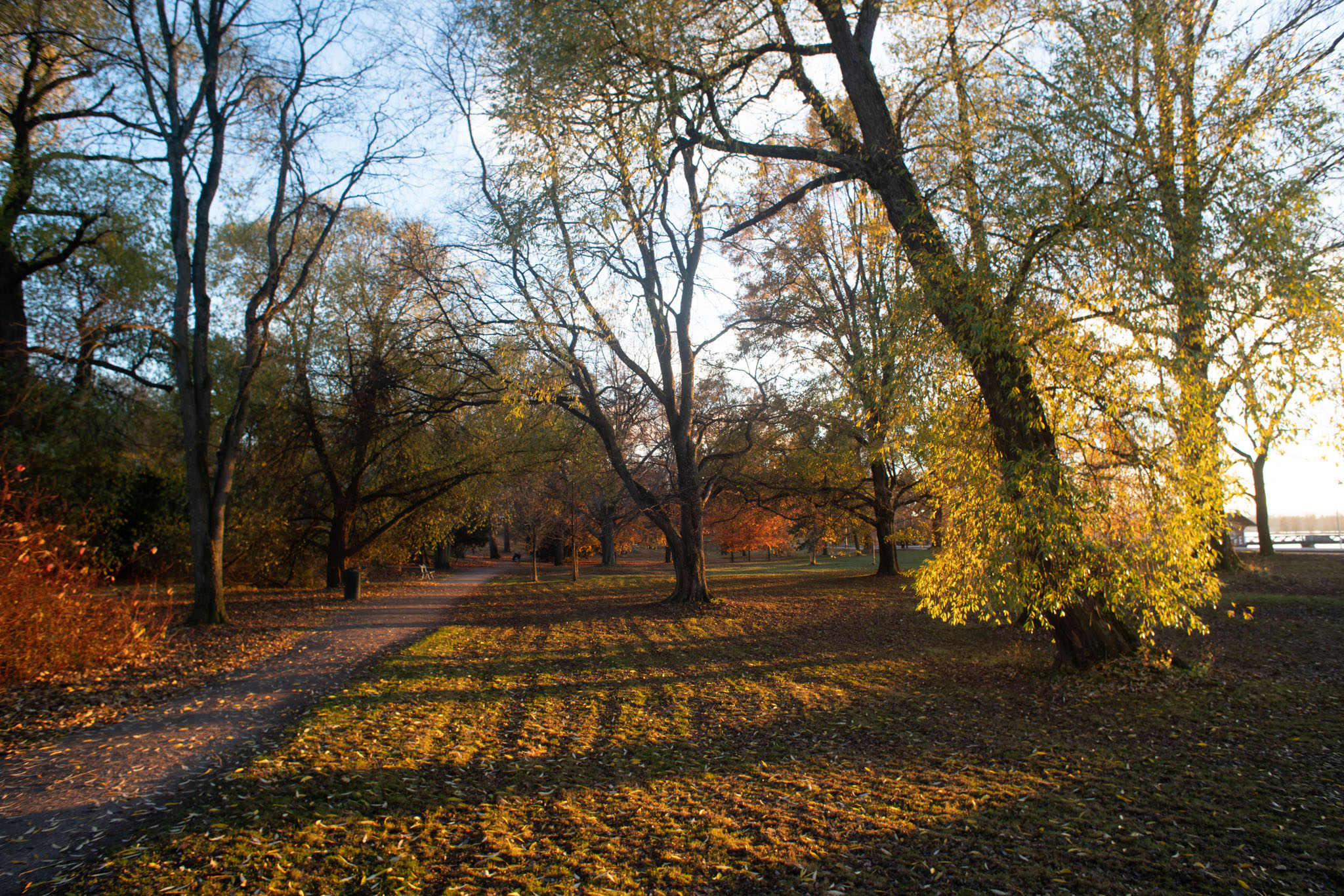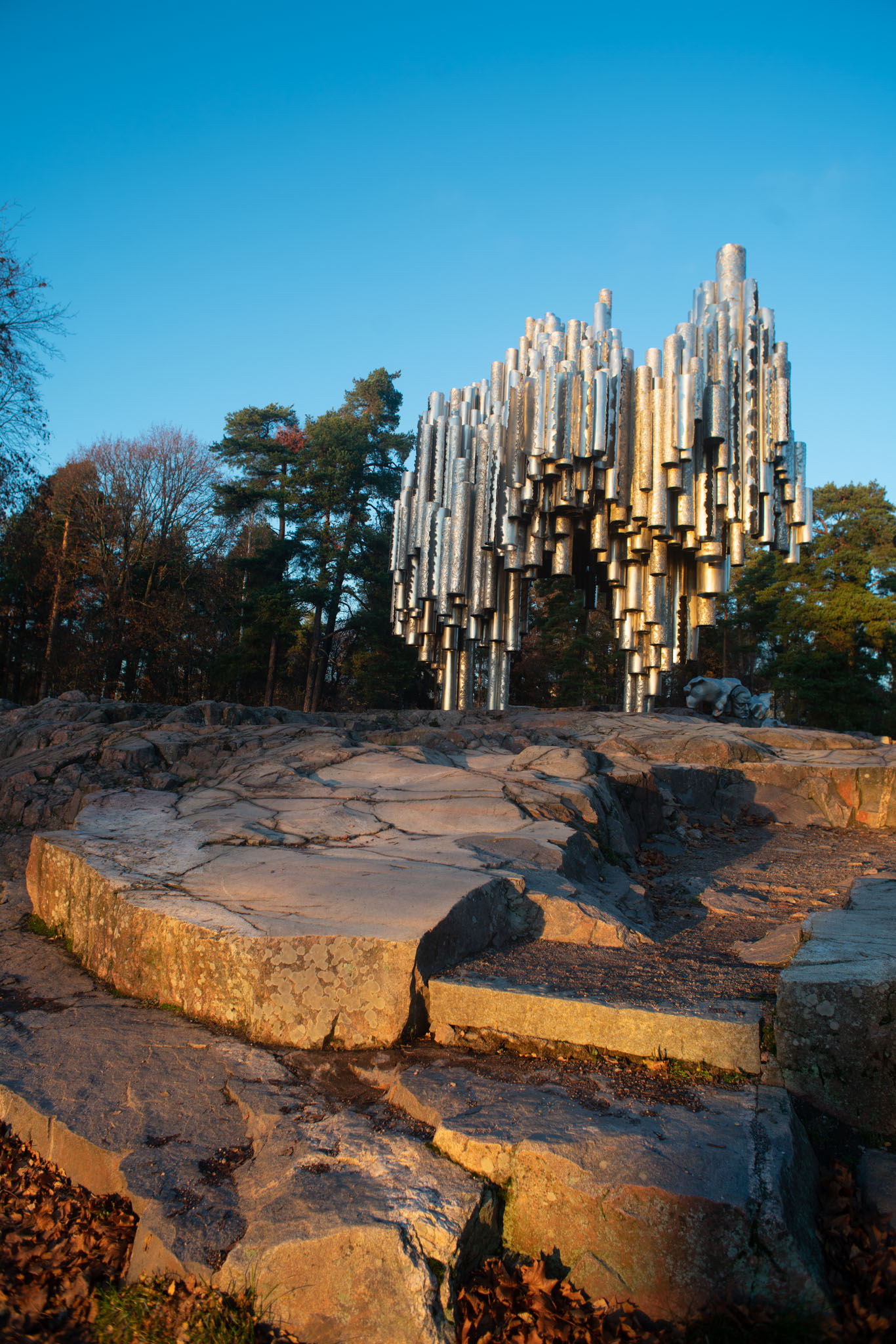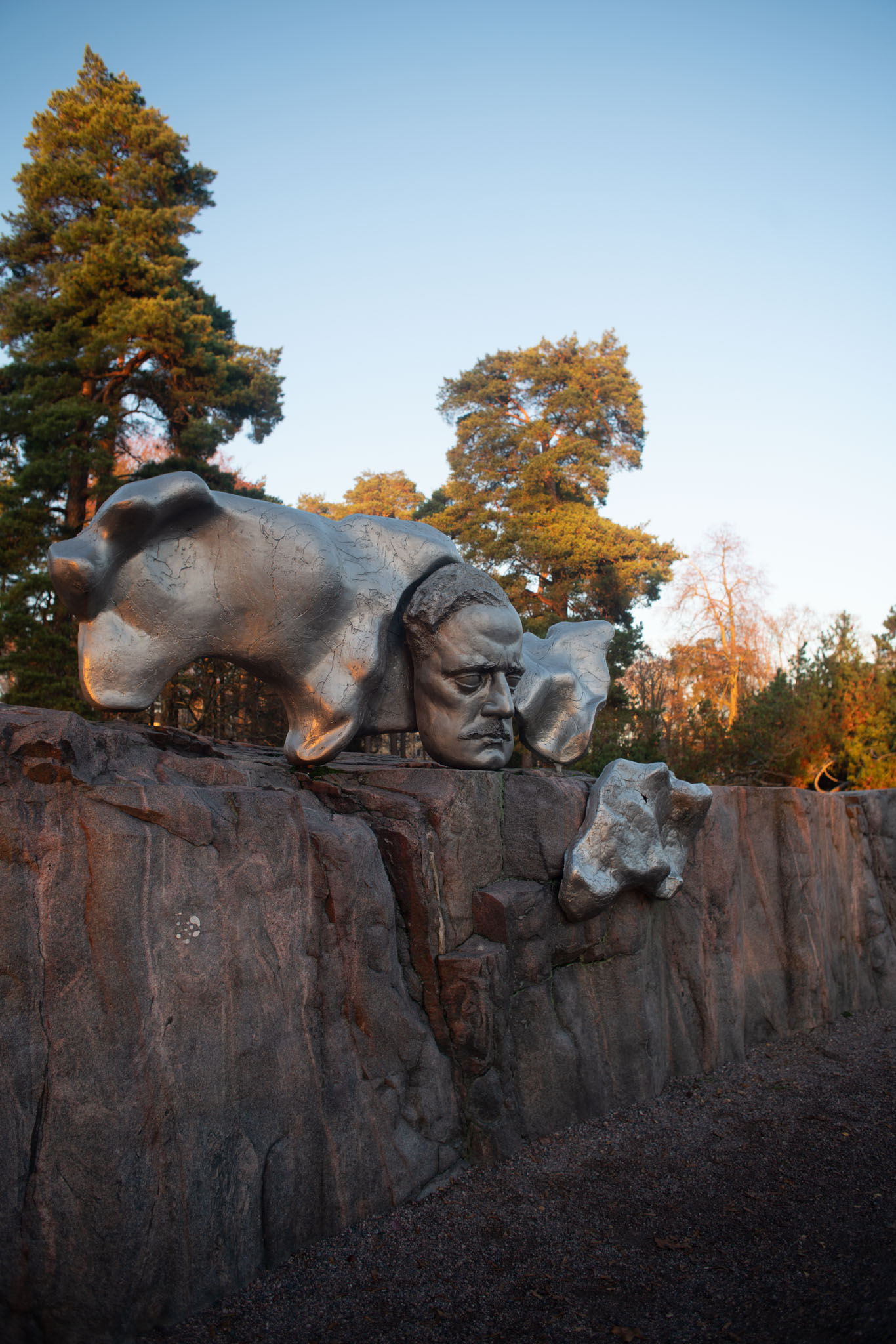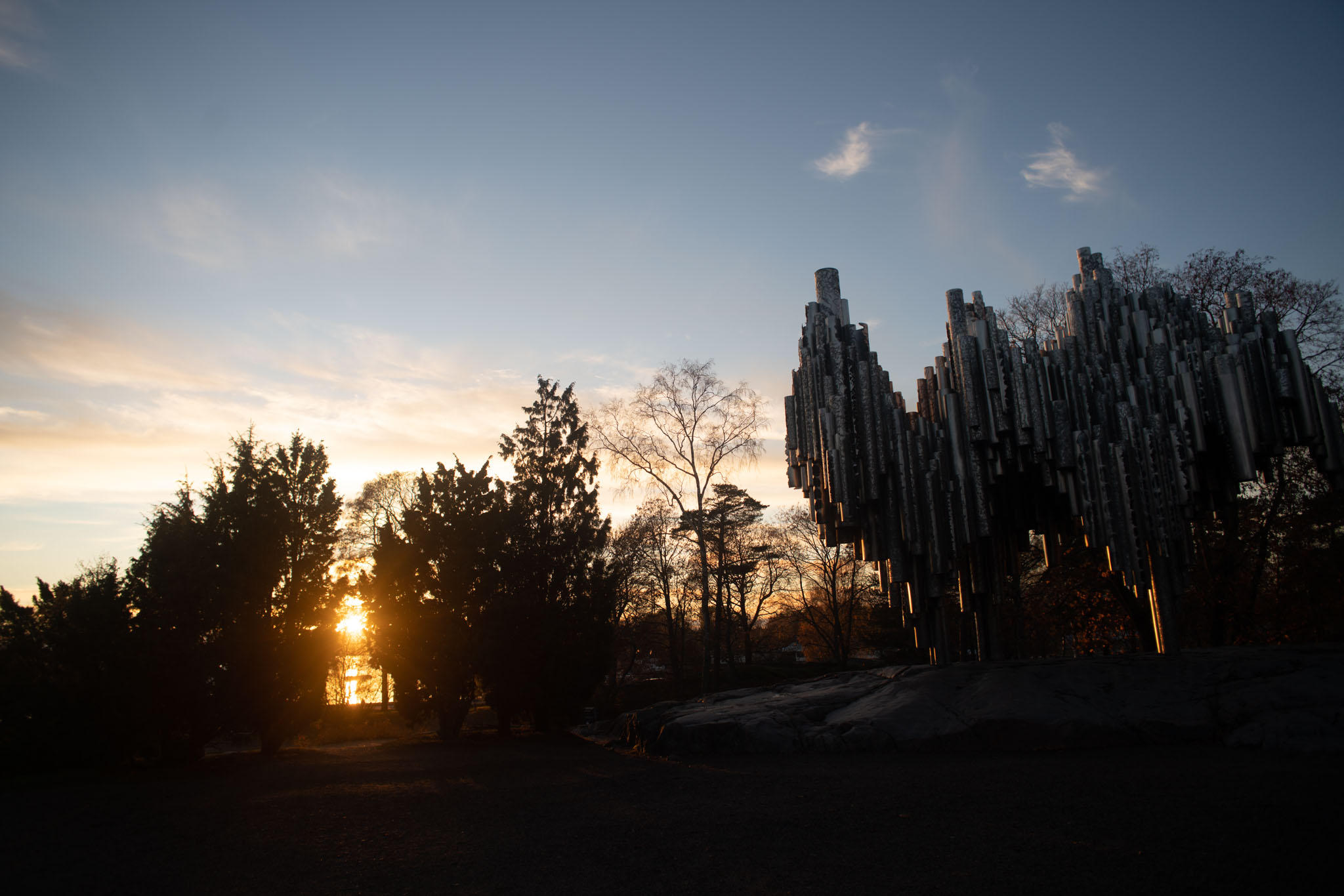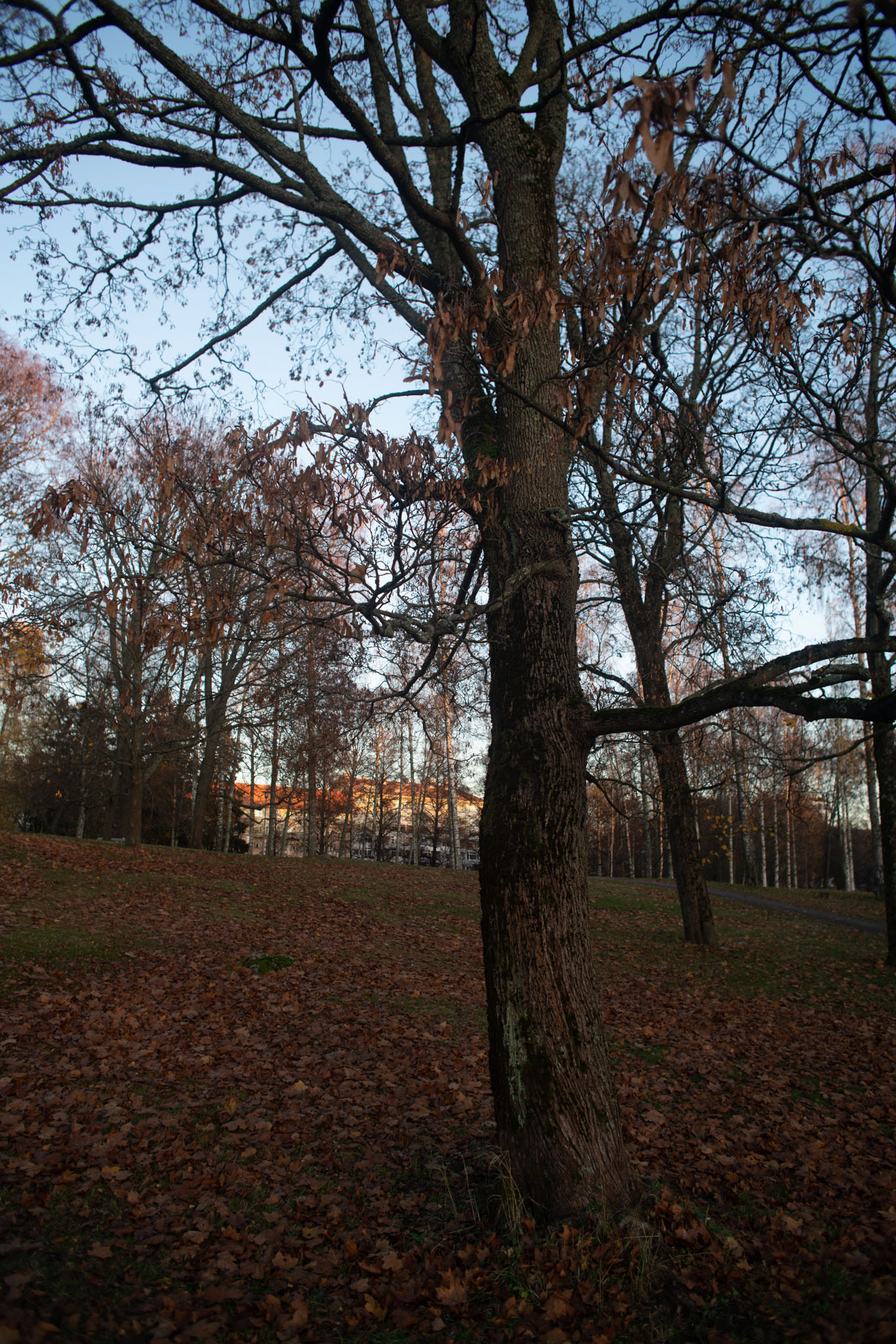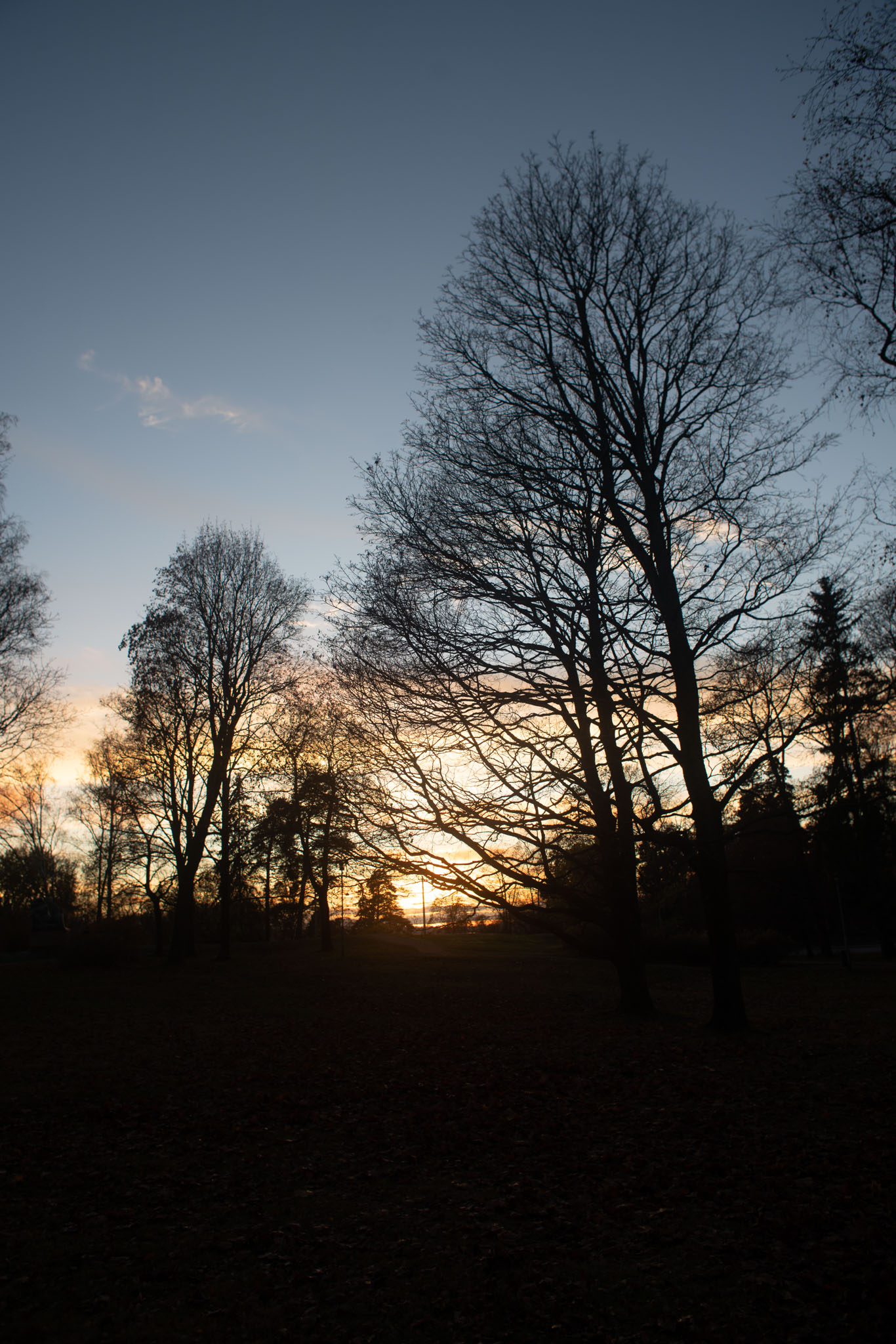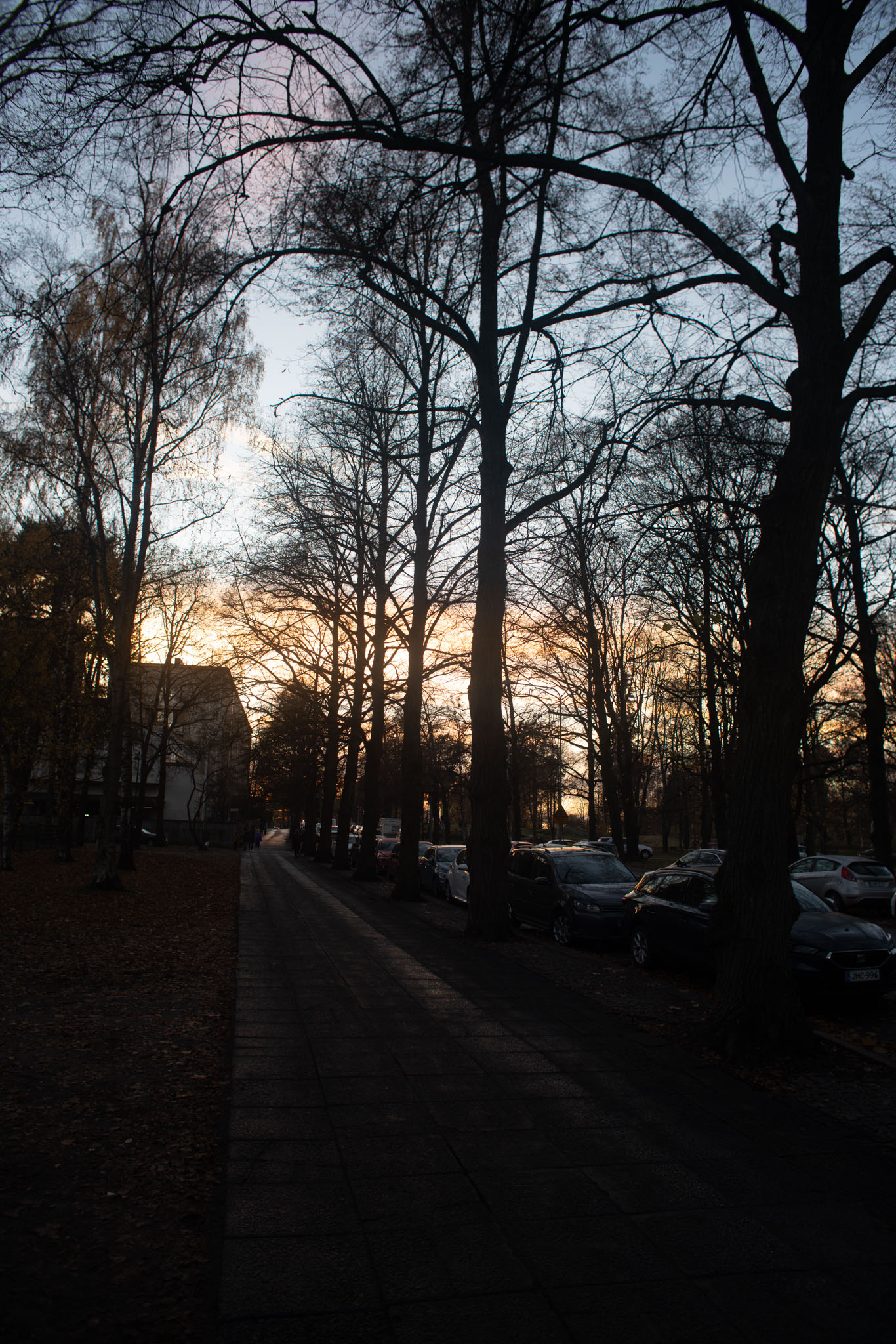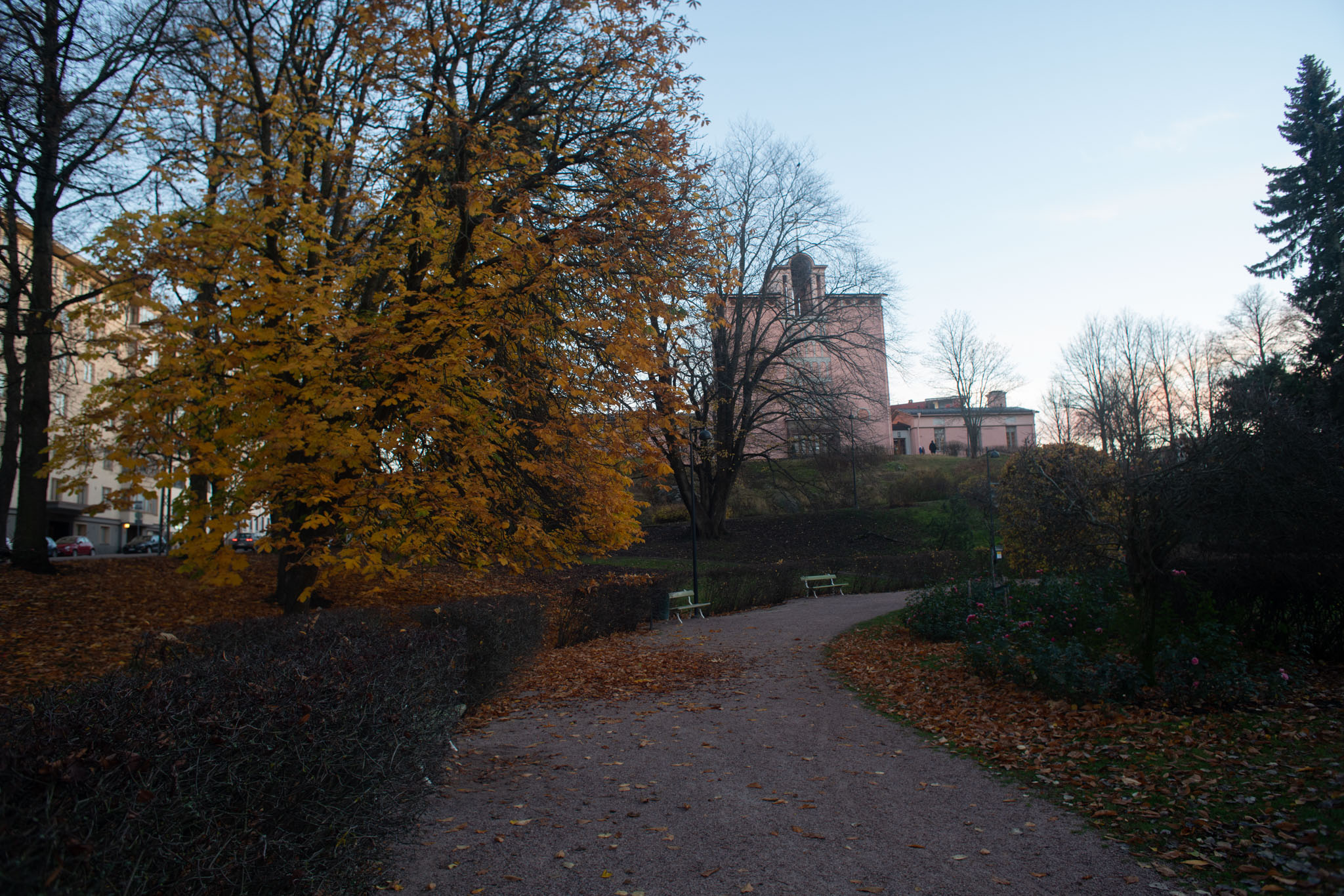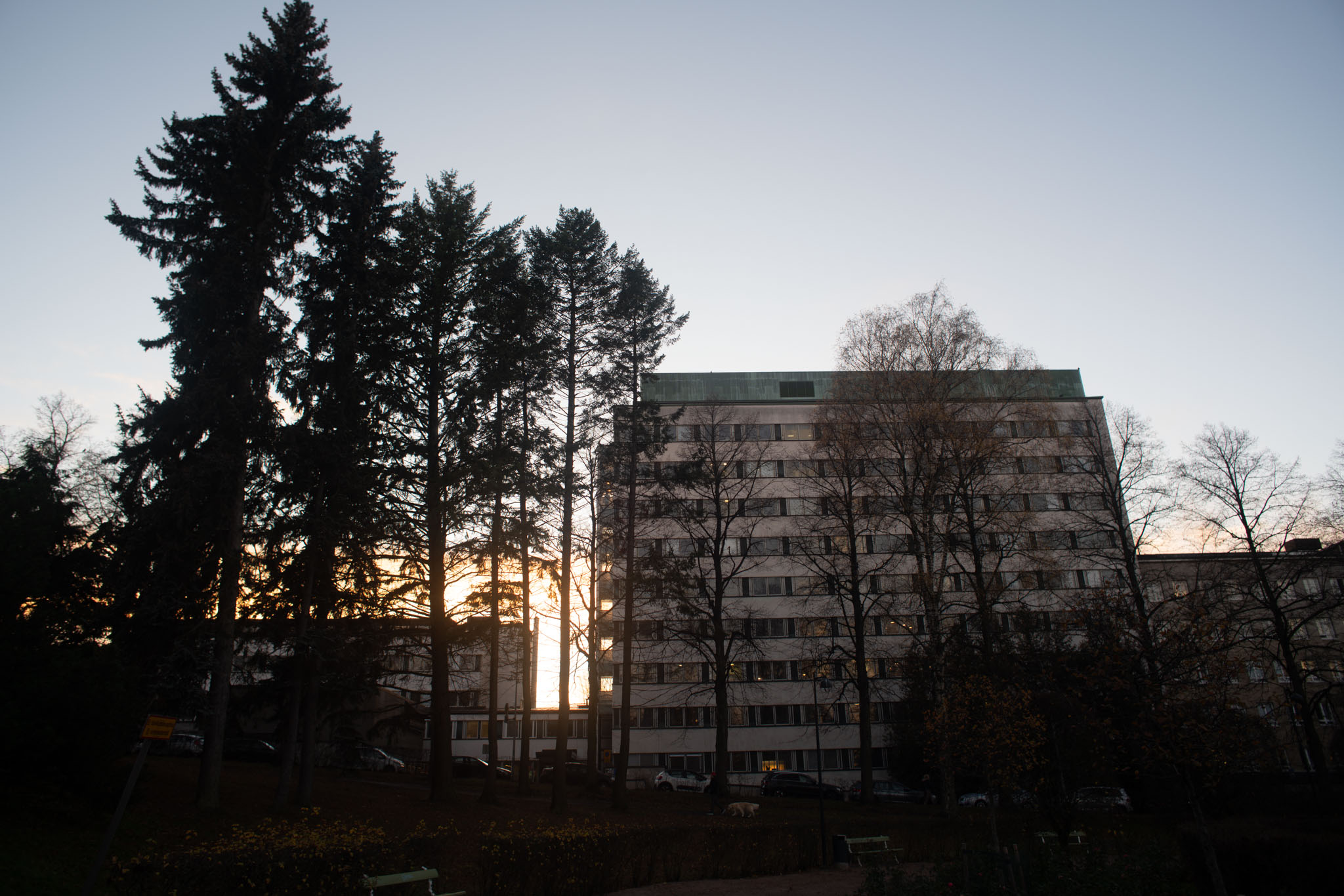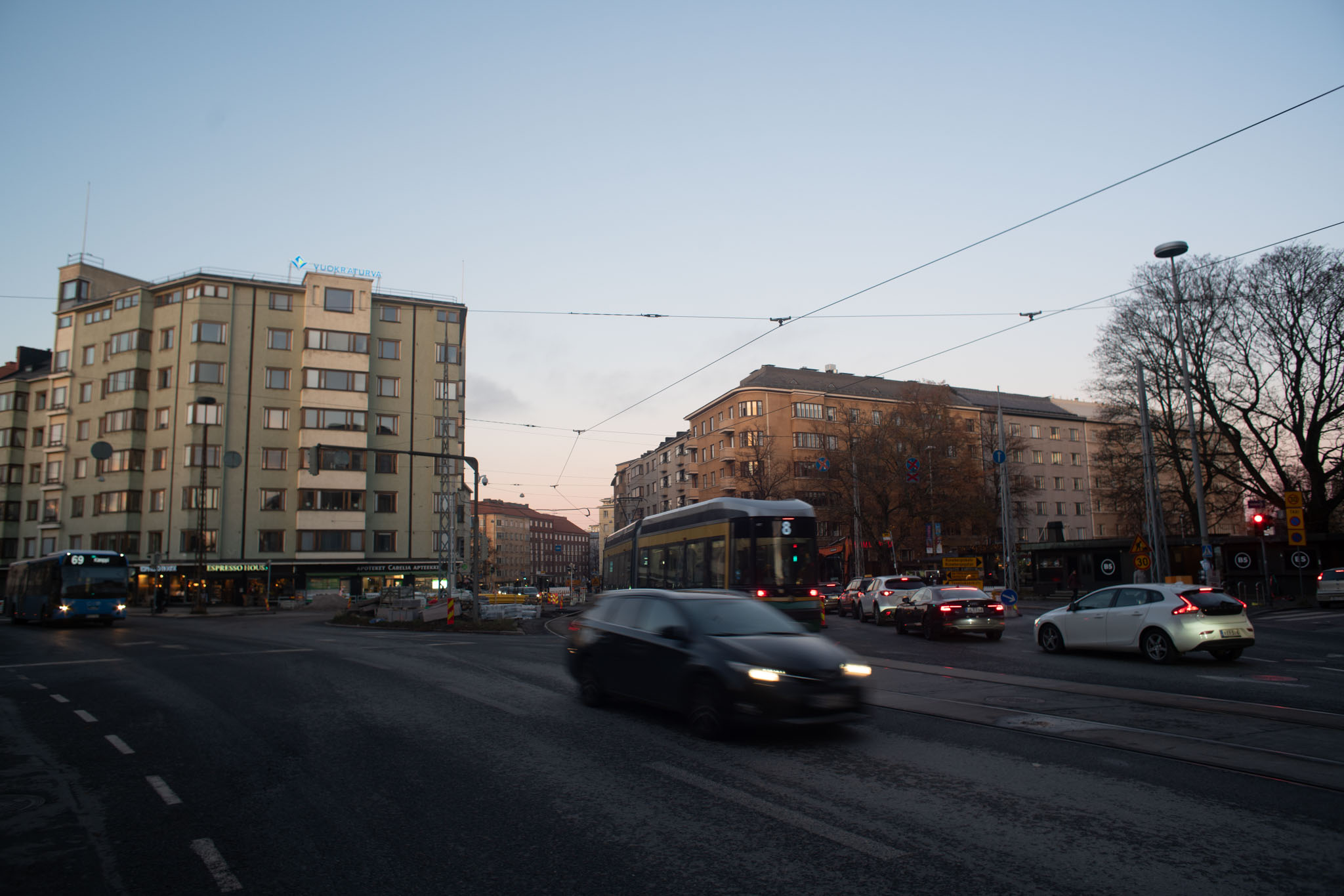Pekka Buttler, 1st November 2022
See the lens’ data sheet here.
The setup
• Helsinki, Finland. 1st November 2022 between 15:40 and 16:50 (sunset/dusk).
• Sony ⍺7R2, K&F Concept Pro dumb adapter, Nippon Kogaku Nikkor-N Auto 1:2.8 24 mm lens, Nikon HN-1 lens hood (as pictured)

• Note please that my sample of the lens is outwardly quite worn, but the optics are in more than reasonable shape.
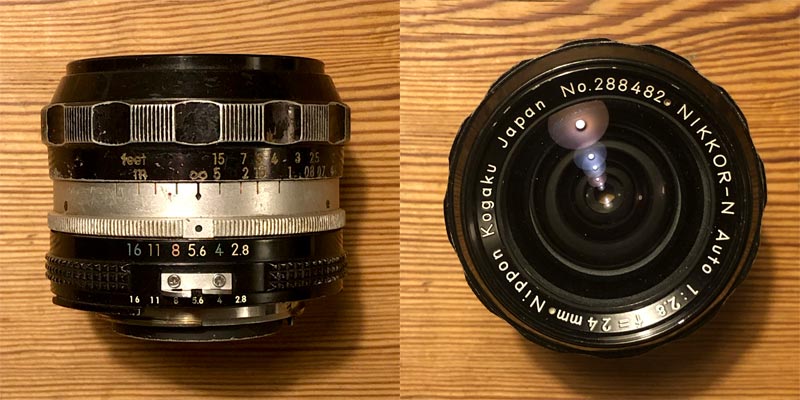
The Lived experience
[Please remember that all comments apply to me personally, and this specific sample]
The hassle:
What hassle? Nikon F lenses are eminently usable as adapted lenses (as long as they have a proper aperture ring, which this lens obviously does). Mount the lens on the adapter, mount the adapter on your mirrorless body, make sure your cameras settings don’t expect a modern high-tech lens, and go shooting.
The ergonomics:
To rubber or not to rubber?
Those who like legacy lenses for the fact that they’re not modern lenses typically tend towards appreciating metal (milled) focus rings, and I certainly see their point. On the other hand, when temperatures are intemperate (it was 7° C during the shoot), there is an upside to rubberised control surfaces. In any case, the focus ring is tactile and reasonably precise.
What do I mean with ‘reasonably precise’, Well, alike several legacy lenses, there is some play in the focus ring (you turn the focus ring one way, notice you’ve gone too far, start turning in the other direction, only to find that you need to turn some ways for the focus to start adjusting), which likely is simply caused by either physical wear, or could be addressed by a CLA. In any case, I’ve never found it to be a showstopper.
The aperture ring is reasonably grippy and tactile and can even be used with fleece gloves on. While there is a minus-side to not having half-stop clicks (Nikon lenses never do), it makes the counting of clicks easier (I typically like to shoot without removing my eye from the EVF).
Please note that the lens in question has been Ai’d (converted to Ai-spec) using Nikon original parts. Hence, my experience of using the aperture ring might differ a bit if the lens still had its original, pre-Ai aperture ring (and in my experience to date pre-Ai aperture rings are a bit more easy to turn).
The Image quality
I have not been pixel peeping, nor is this a side-by-side comparison, but I find sharpness and contrast to be fully sufficient considering that we’re talking about a 50+ year old lens. Admittedly, there is some lateral chromatic aberration in the extreme corners, but I usually don’t put my subjects in the extreme corners of a wide-angle shot. Most cases of ‘corner softness’ evident in the gallery shots is caused by the corners being nowhere near the focal plane. Based on these shots (as well as previous shoots), this lens does not suffer any extreme field curvature.
In general I like the colour rendition and am reasonably please with how well the lens managed to render the sunset/dusk colours. Being a wide-angle (84 °) lens, it obviously produces significant perspective distortion, but optical distortions are extremely well-corrected for such an old wide-angle. Also, vignetting is not a field-relevant problem
However, the lens’ performance in backlight is a bit disappointing. Considering that the lens precedes Nikon’s multicoating (never mind nano crystal coating), it is by no means surprising that the lens produces significant veiling, so that is not the cause of my disappointment. Rather, I had actually hoped that the lens would produce some spectacular ghosting patterns, but even though I pointed the lens at the setting sun in many ways, I only once managed to produce a ghost (and that ghost was somewhat disappointing).
Based on my experience with this lens, I can see why Nikkor 24 mm f/2.8 lenses are generally highly regarded.
The gallery
All images shot in RAW with Auto WB, IBIS on.
Post-processing, ACR Default, Resize to 2048 px, save as JPG (no other editing).
